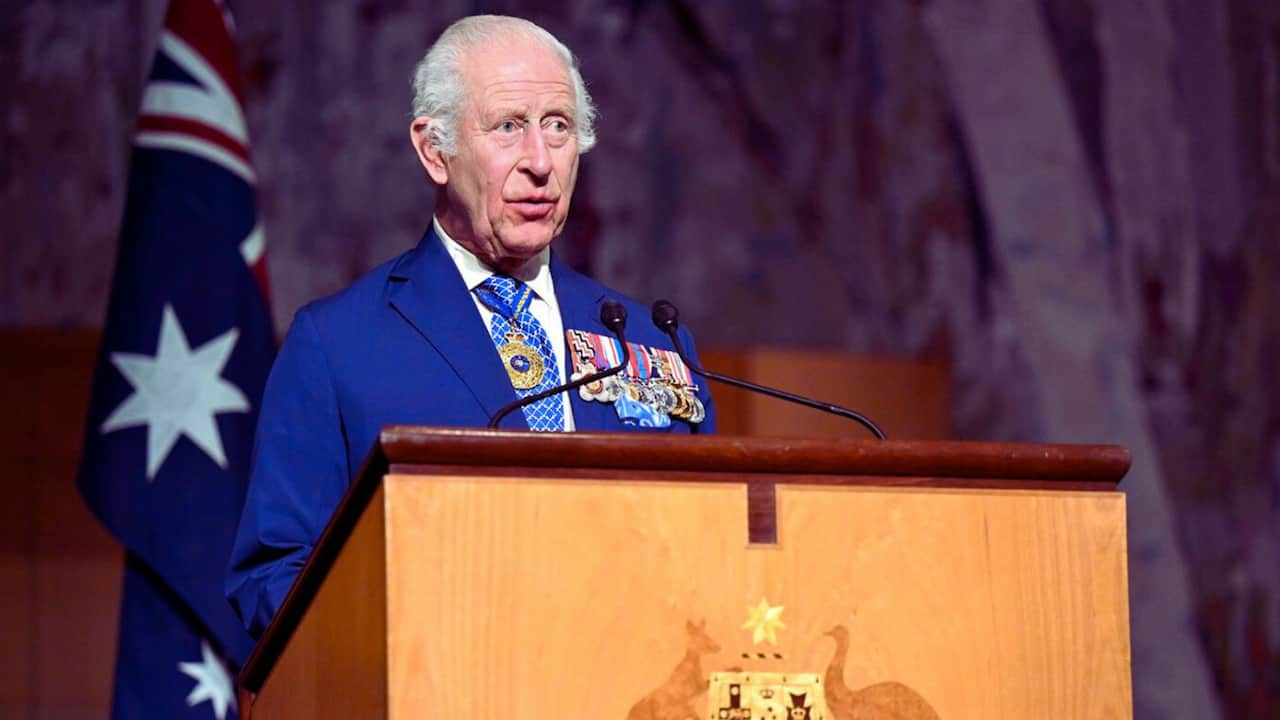Royal Ruckus Down Under: King Charles’ Visit Ignites Debate in Australia
A dramatic turn of events, King Charles III‘s recent visit to Australia has sparked controversy and reignited debates about the country’s relationship with the British monarchy. As a news reporter on the ground, I witnessed firsthand the tension and passion surrounding this royal tour.
The King and Queen Camilla touched down in Sydney on Friday, kicking off their first major Commonwealth tour since Charles took the throne. However, it was their visit to Canberra on Monday that truly sparked excitement.
A royal welcome… sort of
A mix of cheers and protests greeted the royal couple as they arrived at Parliament House. Many Aussies waved flags and smiled, eager to catch a glimpse of the royals. But not everyone was rolling out the red carpet.
Outside, protesters held up the Aboriginal flag, making it clear that for many Indigenous Australians, the monarchy is a painful reminder of colonial history. The police even had to step in, arresting a 62-year-old man who refused to follow their orders.
Fireworks in Parliament
Inside Parliament House, things really heated up. King Charles gave a speech that touched on Australia’s First Nations people. He said, “Throughout my life, Australia’s First Nations people have done me the great honor of sharing so generously their stories and cultures.”
But his words didn’t sit well with everyone. As soon as he finished speaking, Independent Senator Lidia Thorpe stood up and shouted, “You are not my king!” She continued to yell, “Give us our land back; give us what you stole!” as security guards rushed to escort her out.
Thorpe, who is a DjabWurrung Gunnai Gunditjmara woman, has long been a vocal critic of the monarchy. She’s been pushing for a treaty between Indigenous Australians and the government, something that’s never happened in the country’s history.
A Nation Divided
This incident highlights the deep divide in Australia over its relationship with the British Crown. For some, the royals represent tradition and stability. However, for others, particularly many Indigenous Australians, they represent unresolved past wrongs.
The Greens party backed up Thorpe’s protest, saying that while the King’s visit was exciting for some, it was also “a visual reminder of the ongoing colonial trauma and legacies of British colonialism” for many First Nations people.
On the flip side, the Australian Monarchist League wasn’t pleased with Thorpe’s outburst. They called it a “childish demonstration” and demanded she resign from her position.
Not just politics, as usual
But it wasn’t all serious business during the royal visit. In a lighter moment, King Charles had a run-in with an alpaca named Hephner, who promptly sneezed on him! It was a reminder that even kings aren’t immune to the unpredictable nature of animal encounters.
The royal couple also participated in some tree planting, reflecting Charles’ well-known interest in environmental issues. Prime Minister Anthony Albanese praised the King’s long-standing concern about climate change, saying it showed his understanding of “the grave reality” and the need for “meaningful and effective action against it.”
What’s Next for the Royals?
The tour isn’t over yet. Next, King Charles and Queen Camilla will travel to Sydney for a public reception at the renowned Opera House. After that, they’re off to Samoa for the Commonwealth Heads of Government Meeting (CHOGM).
This is a big deal for Charles—it’s his first CHOGM as the head of the Commonwealth. Charles is embarking on his first extended journey since receiving a cancer diagnosis earlier this year. Doctor’s orders have lightened his schedule, but he’s still keeping busy.
The Big Picture
This royal visit has done more than just make headlines; it’s sparked important conversations about Australia’s past, present, and future. As the country grapples with issues of Indigenous rights, climate change, and its place in the world, the monarchy’s role in modern Australia remains a hot topic.
Regardless of one’s inclination towards royalism or republicanism, this royal tour has provided Australians with a wealth of topics for discussion. As the debate continues, it’s clear that the relationship between Australia and the British Crown is far from simple, and this visit might just be the beginning of even bigger discussions to come.
Table of Contents
